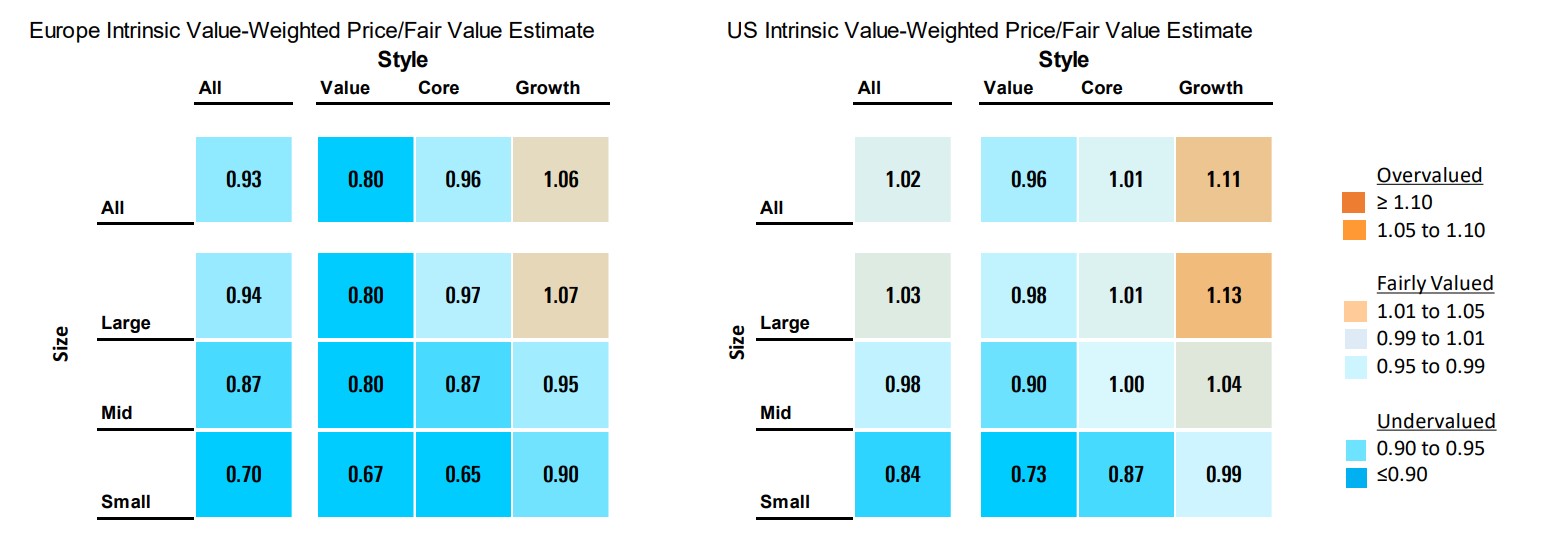Markets Brief: Is 16% a Good Return?
Plus: Earnings season, CPI, and high-yield bonds.

Emerging Markets Outperform
The fourth quarter of the year has started as the third quarter ended, with investors in buoyant mood. The Morningstar US Market Index rose 6% over the quarter despite the short periods of panic that afflicted investors early in the months of August and September. However, these returns were eclipsed by markets outside the US, as the Developed Markets ex US and the Emerging Markets indexes both rose 8.2%. The latter was aided by China which rose 28.6% over the quarter. Emerging market stocks were flattered by the weakness of the US dollar which fell 4.3% against the euro over the quarter.
Job Numbers Drive the Dollar
Against this background of optimism, Friday’s employment data was well received. The unemployment rate unexpectedly fell to 4.1% as more jobs were created in September (254,000 vs 150,000 expected). The dollar rose 0.5% against the euro over the week and the yield on 2-year Treasury bonds rose 0.2% as market participants digested the implications for future interest rate cuts. You can dig deeper into these data in this article by Tom Lauricella, Morningstar’s chief markets editor.
European Stocks Better Value
Despite the recent sharp rise in stock prices, Morningstar’s analysts continue to see value in parts of the US market as highlighted by David Sekera, chief US market strategist in his Q4 Stock Market Outlook. However, we see greater opportunities outside the US market as shown by the tables below from Morningstar’s Q4 European Market Outlook. These compare the price/fair values for US and European stocks by size and style as at the Sep. 19. While the opportunities exist in similar parts of the market, European assets appear to offer better value than the US.
European fair values

High-Yield Bonds Lag Equities
When assessing whether a return is attractive, we tend to use either an absolute lens (how far did it rise?) or a relative lens: did it provide higher returns than other assets that exhibit similar risks? However, more useful for most investors is to use a third portfolio lens: did it do the job that was required? This is especially relevant when considering US high-yield bonds, which delivered a return of 5.3% over the quarter and 15.7% over the last 12 months. As assets that combine some of the characteristics of equities with those of higher quality bonds, an investor can choose what role they should play in a portfolio, whether they control risk or deliver returns.
While a 15.7% return is high, it is lower than that delivered by equities over the same period and so would be a disappointing substitute. Equally, while high-yield bonds did not fall as far as equities in early August, they demonstrated positive correlation, which is not helpful if an asset is being used to control risk. In this context, the return on high-yield bonds can be considered disappointing. While these assets can be attractive when priced appropriately, this example demonstrates the importance of giving every asset a clearly defined role in the portfolio. Without this, we are likely to misjudge the attractiveness of both the prospective and realized returns and consequently make avoidable errors when changing the portfolio.
Earnings Season Cranks Up Again
Individual stocks will be back in the spotlight over the next few weeks as US companies report their third-quarter earnings starting with banks and asset managers. Ahead of these announcements, analysts have downgraded their expectations for profit growth for the US market from 7.8% at the end of June to 4.2% last week (Source: FactSet). Downgrades in expectations are not unusual as companies are keen to lower expectations ahead of results to create a positive ‘surprise’ and the associated bump in the stock price. Rather than engage in this tedious game of expectation management, our analysts use the data provided by companies to identify changes in the long-term prospects of the business and consequently its fair value. You can follow this work on our dedicated earnings page and find out which companies are reporting each day on our new earnings calendar.
CPI Data Due
Following the fall in unemployment last week, market commentators will be keenly focused on the latest inflation data released on Thursday. Annualized core consumer price inflation (CPI) is expected to remain steady at 3.2%. A high number is likely to cause concern that the Federal Reserve will need to moderate future interest rate reductions and lead to volatility in asset prices.
Highlights of This Week’s Market and Investing Events
- Monday, Oct. 7: Consumer Credit
- Wednesday, Oct. 9: Minutes from the March Federal Open Market Committee meeting
- Thursday, Oct. 10: Consumer Price Index report, Initial Unemployment Insurance Claims report, earnings from Tilray Brands TLRY
- Friday, Oct. 11: Producer Price Index report, Preliminary University of Michigan Index of Consumer Sentiment, earnings from BlackRock Finance BLK, JPMorgan Chase JPM, Wells Fargo WFC
Check out our full weekly calendar of economic reports, consensus forecasts, and corporate earnings.
For the Trading Week Ended Oct. 4
- The Morningstar US Market Index rose 0.21%.
- The best-performing sectors were energy, up 6.85%, and utilities, up 1.17%.
- The worst-performing sector was real estate, down 1.97%.
- The yield on 10-year US Treasury notes rose to 3.98% from 3.75%.
- West Texas Intermediate crude prices rose 8.51% to $74.57 per barrel.
- Of the 703 US-listed companies covered by Morningstar, 427, or 61%, were up, five were unchanged, and 276, or 39%, were down.
What Stocks Are Up?
Vistra VST, Helmerich & Payne HP, Diamondback Energy FANG, Patterson-UTI Energy PTEN, Williams Companies WMB
Best-Performing Stocks of the Week

What Stocks Are Down?
Humana HUM, Intellia Therapeutics NTLA, Shoals Technologies Group SHLS, Harley-Davidson HOG, Coinbase Global COIN
Worst-Performing Stocks of the Week

The author or authors do not own shares in any securities mentioned in this article. Find out about Morningstar’s editorial policies.

/s3.amazonaws.com/arc-authors/morningstar/687c42c2-15b8-4c8d-a9f6-6fadac96dd73.jpg)
/cloudfront-us-east-1.images.arcpublishing.com/morningstar/QFQHXAHS7NCLFPIIBXZZZWXMXA.jpg)
/cloudfront-us-east-1.images.arcpublishing.com/morningstar/ZYJVMA34ANHZZDT5KOPPUVFLPE.png)
/cloudfront-us-east-1.images.arcpublishing.com/morningstar/YI7RBXKMXVAZDBWEJYQREEJJL4.png)
:quality(80)/s3.amazonaws.com/arc-authors/morningstar/687c42c2-15b8-4c8d-a9f6-6fadac96dd73.jpg)